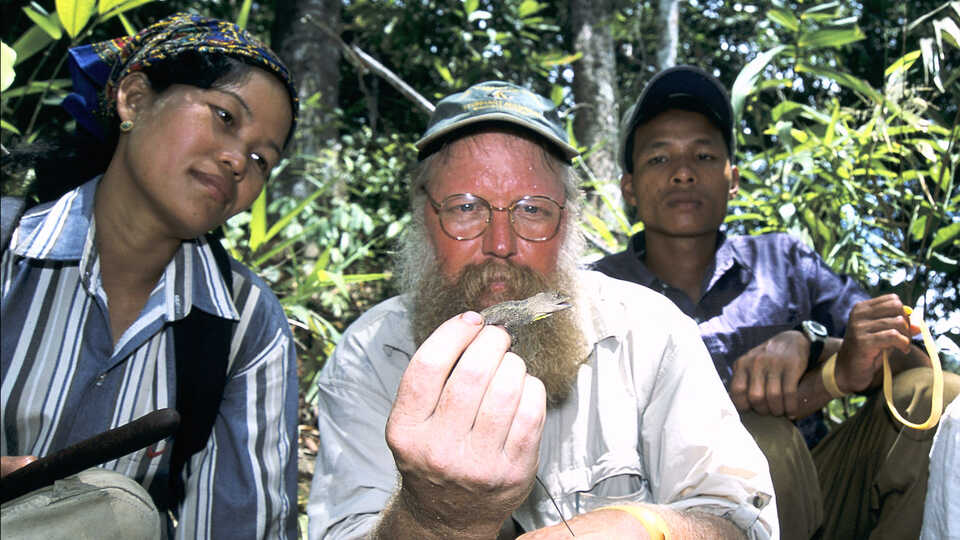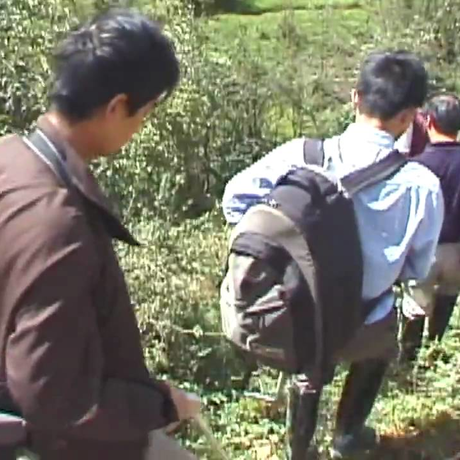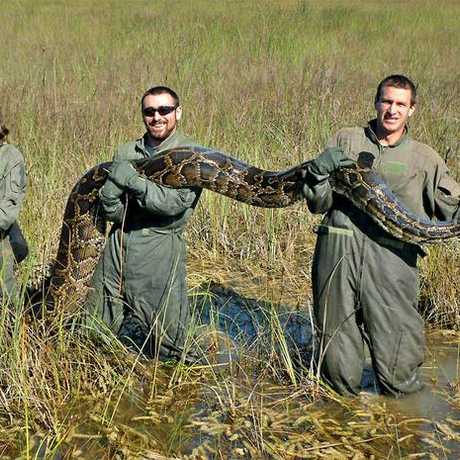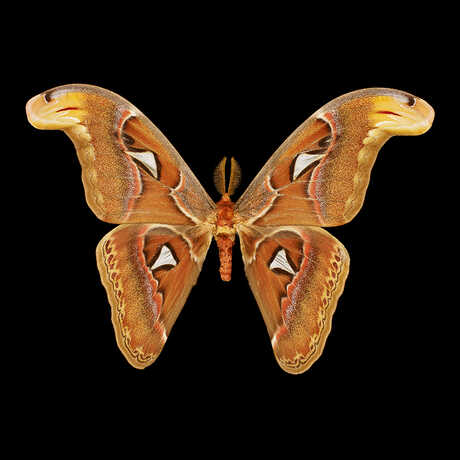Scientific Expeditions
Myanmar Herpetological Project

Historically, Myanmar's timber has been valued above all natural resources in the country. But as one of the world's twenty-five designated "biodiversity hotspots," Myanmar holds another rich, but rapidly diminishing, resource: a diverse concentration of plant and animal species, many of which can only be found within the country's borders.
Since 1997, Academy scientists have been working not only to document this biodiversity, but to empower local scientists to better study and protect the country's resources. So far, Academy herpetologists have conducted surveys in 19 of Myanmar's 34 parks and reserves while teaching local researchers how to identify, collect, and store specimens.
The Team
The Myanmar Herpetological Project is a collaboration between the California Academy of Sciences, the Myanmar Forestry Department, Ministry of Forestry, and the National Museum of Natural History. Principal Academy scientists from the Department of Herpetology have included Jens V. Vindum, Alan E. Leviton, and Jeffery A. Wilkinson. The surveys are conducted primarily by a trained field team chosen from employees of the Nature and Wildlife Conservation Division. It represents the first systematic herpetological survey to be conducted in the country, and the first to be conducted primarily by Myanmar Forestry Department staff.
Expedition Goals
Researchers from Myanmar Herpetological Project seek to document the amphibian and reptile life of the country and explore those species' relationships to nearby regions. This data will the help the Myanmar government to better understand its natural resources and make informed conservation decisions. Scientists have also worked with local peoples to promote the continued study of organismal biology and to train future biologists in the best methods of identifying species and preserving natural habitats.
Herpetological Research
Since work began in 1997, Academy herpetologists have discovered 58 new species of frogs, toads, snakes, and lizards, increasing the country's known diversity of reptiles and amphibians by an estimated 21 percent. A number of these new species live only in isolated pockets of mountainous terrain, including nine new species of geckos in the genus Cyrtodactylus. The geckos in this genus are unusual because they lack the suctioning toe pads that are characteristic of other geckos.
Building Myanmar's First Science Museum
Academy scientists collaborated with researchers from the Smithsonian Institute and Myanmar's Nature and Wildlife Conservation Division to create a permanent home for the specimens collected during Academy research expeditions in Myanmar. After several shipments of museum supplies from the Academy, the Myanmar Biodiversity Museum has become a fully functional facility. Herpetologist Jens A. Vindum and his team worked with the museum's new employees to organize and computerize the 4,000 herpetology specimens in their collections, and to set up what is now one of the biggest scientific libraries in the country.
The Venomous Snakes of Myanmar
Myanmar has one of the highest mortality rates from snake bites in the world due to several factors: the sheer number of poisonous snakes in the region, the snakes' chosen habitat (farmland and rice paddies), and limited access to health care. To help, researcher Vindum and his team assembled The Dangerously Venomous Snakes of Myanmar—a book now used by Burmese medical professionals to identify snake species, which are often brought to the hospital along with victims of snake-bite.
The Academy's Herpetology collection of amphibians and reptiles is one of the 10 largest in the world, containing more than 309,000 cataloged specimens from 175 countries. Learn more about the department's staff, research, and expeditions.





